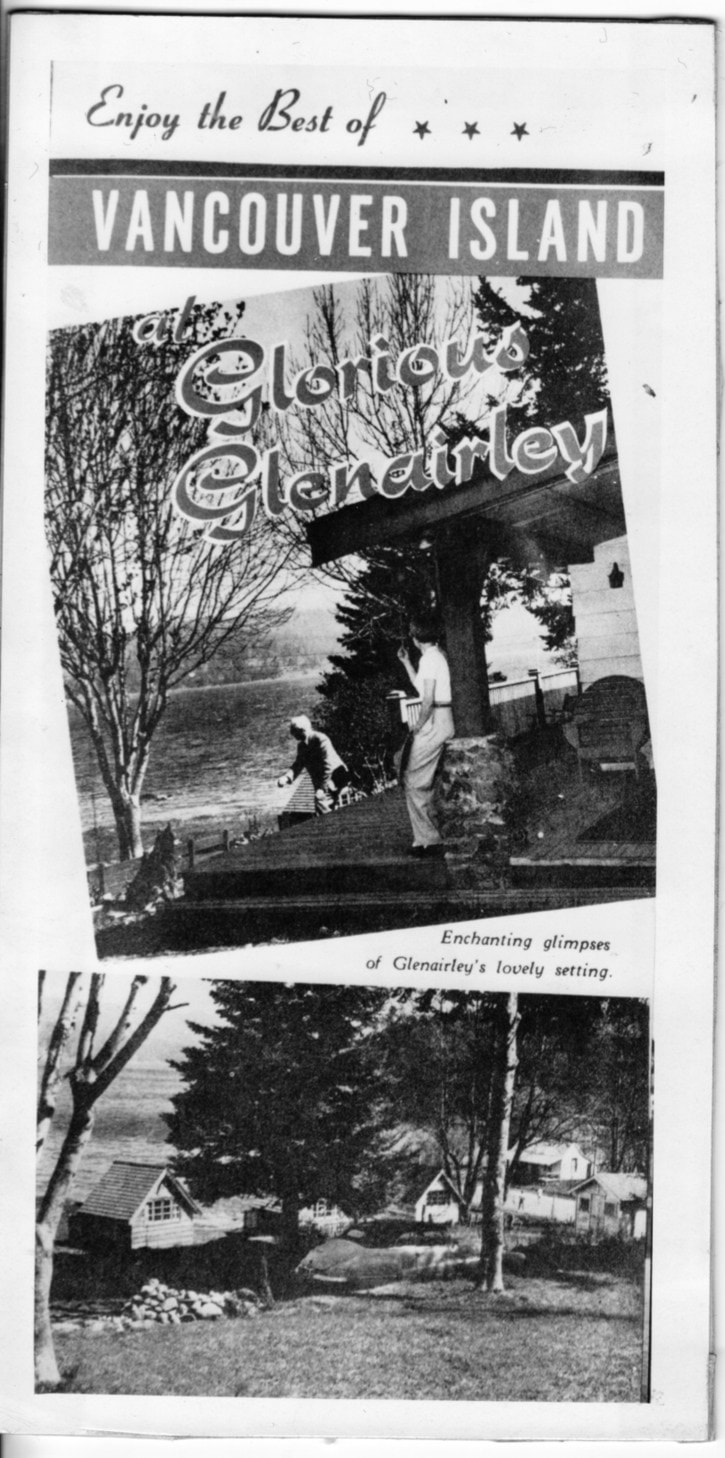With Glenairley beginning a new chapter in its unfolding story now may be a good time to look at highlights of its past 100 years. Beautifully situated on the waterfront at East Sooke, it has been a family home, farm, resort, religious retreat, community centre, ecocentre and now has a new role as a training base for the Royal Canadian Marine Search & Rescue.
It would be hard to overstate the significance of the families who have lived there. It was 1910 when Alexander Gillespie, a B.C. Land Surveyor occupied in surveying the northern wilderness of the province such as the Skeena River area, decided he could no longer bear being so far from his wife and children in Victoria.
Thinking to join the neighbourhood at the far reach of Sooke Basin, where his father, George Gillespie had a summer home “Grouse Nest” Alexander Gillespie purchased acreage on the eastern shore and set to work. The fields were tilled, crops planted, and before long a family dwelling built by a carpenter named Owens stood on the sunny slope. In 1913 carpenters from England - Harry, Vernon and Charlie Richardson enlarged the house.
Alexander Gillespie was married to Rose Ellen “Nellie” a daughter of Jacob Hunter Todd, and the couple raised Sheila, Daphne, Jean and Rosanna. The sojourn on the farm was an idyllic childhood for the girls as they helped with farm chores and tending the prize Jersey cattle. It ended only when the Gillespies sold the farm in 1929 and Alexander joined the family firm of Gillespie, Hart & Company in Victoria.
Around this time the eldest Gillespie daughter, Sheila, married Dr. J. W. Anderson, whom she had met on a liner bound for Hong Kong. One of the Anderson sons, David, followed Gillespie family tradition and became well-known as a federal politician, serving in Liberal cabinets as Environment Minister and Fisheries Minister.
The Anderson daughter, Fiona Hyslop also became known to Sooke residents during her time as an event organizer at the University of Victoria. In her position, she was able to steer many conference attendees towards the Sooke Community Association and its loggers sports/salmon barbecue entertainment evenings, in those days a popular convention field trip.
In Glenairley’s life as a resort after the Gillespie years, perhaps the most significant owners that followed were Ray and Grace Horgan, who hosted many distinguished figures looking for a quiet secluded getaway. Among those who stayed in the little rustic A frame cabins that dotted the grounds was Senator Nancy Hodges, whose career had included being a newspaper columnist and the ground-breaking first woman Speaker of a Legislative Assembly in the British Commonwealth.
Grace Horgan herself was no stranger to history. A daughter of Dr. J. McKenna, Chair of the McKenna-McBride Commission appointed to visit and re-structure First Nations Reserves throughout the province of B.C. between 1913 and 1916, her own interests led her to write several historical articles, especially on the history of the Roman Catholic Church in the new colony that became B.C.
Grace deeded Glenairley to the Sisters of St. Ann in 1960, to be used as a retreat for the nuns. This arrangement carried on until recent years, when it was leased for use as “a centre for the earth and spirit.”
A smaller portion of East Sooke acreage next door to Glenairley was retained by the Gillespie family and has been home for many years to a Gillespie granddaughter, Janet, and her husband David Broadbent. By an interesting quirk of fate, David Broadbent, a retired mariner, enjoyed a career with the provincial Search & Rescue Co-ordination Centre. Janet says “I believe my grandparents would be so pleased to know that the land they cherished is now to be in the public domain.”
Elida Peers,Historian
Sooke Region Museum
